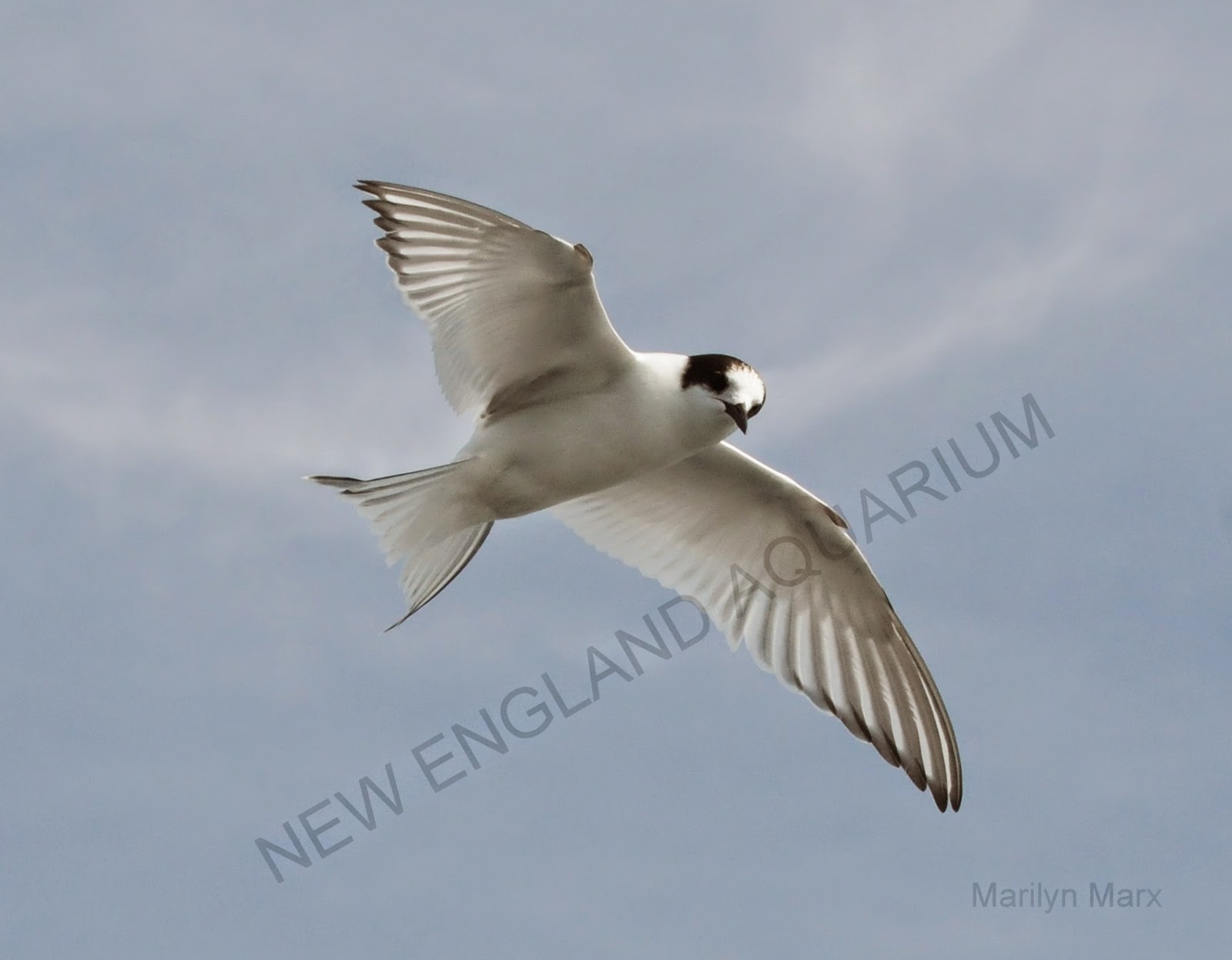Heading to the Shelagh, at Campobello Island.
The next day, we were able to start our tracklines at the western edge of Roseway Basin, and we surveyed our southern-most track from west to east. There were far more pelagic birds seen than the day before, such as greater shearwaters, gannets, and Wilson's storm petrels. The amount of bird life seemed promising, but the majority of our cetacean sightings were fin whales. We were hove to for the night, and in the morning began surveying more to the northeast. Again, we had very few sightings of anything, and the weather was making our trip more than just a bit unpleasant. While Kelsey and Philip were on watch in a sea state 4-5, two breaching humpbacks were sighted.
Success! Breaching humpback, photographed by Philip Hamilton.
This being the most action we had all day, we were determined to get photographs to identify the individuals. Doing our best to hold on to the coffee pot in the galley while Kelsey and Philip did their best to hang on up top, the team worked together to collect photographs in the safest, most efficient way possible. After confirming that the weather would be worsening the next day, we headed in that night to the port at Daniel's Head on Cape Sable Island, N.S.
After docking in Cape Sable, the team was eager to go for a walk and do some stretching.
A boat sure can get dirty in three days! We spent the morning in port cleaning, and then welcomed a guest from JASCO Applied Sciences who came bearing some important equipment- the pop-up acoustic buoys that Dalhousie University requested us to deploy. We were happy to oblige, since the buoys will detect right whale calls in Roseway Basin- check back for a future post in which Moe will explain the details!
Even though we hadn't seen any right whales, the first leg of our offshore trip was a successful shake-down cruise. We figured out how long our pre-made dinners take to defrost, how to use the walkie-talkie without sounding like you're in the middle of a hurricane, accepted the fact of having an interrupted sleep schedule every night, and figured out why the refrigerator had not been working for three days. After spending a day in Cape Sable, we were ready to head back out to Roseway to see what else was out there...
Getting cozy with the fishing boats at Daniel's Head, Cape Sable.
- Marianna





































